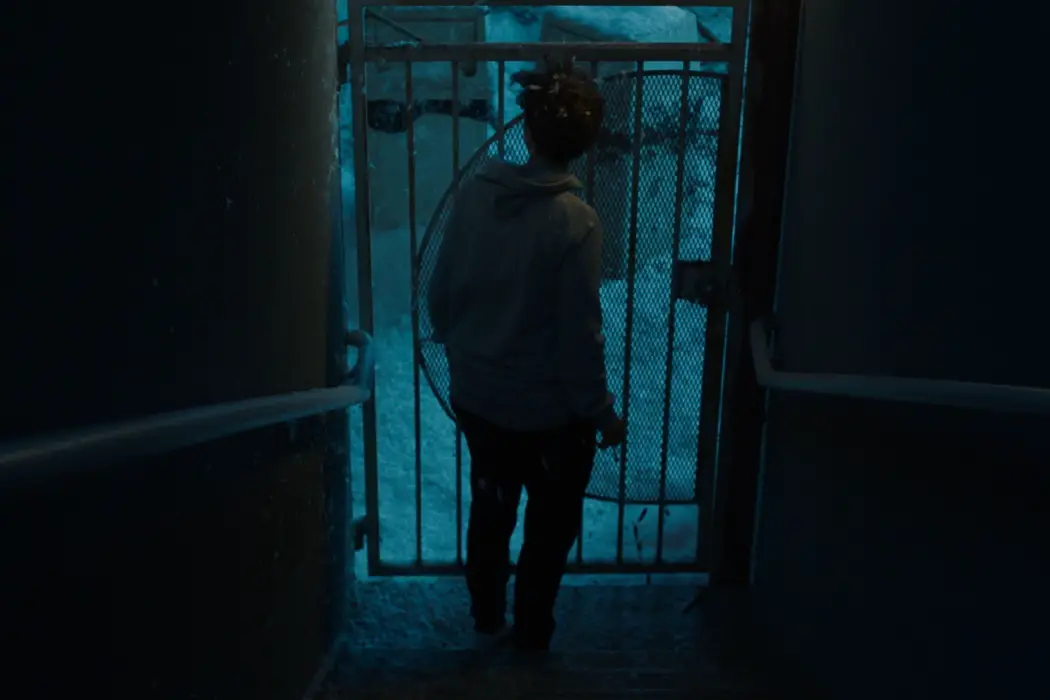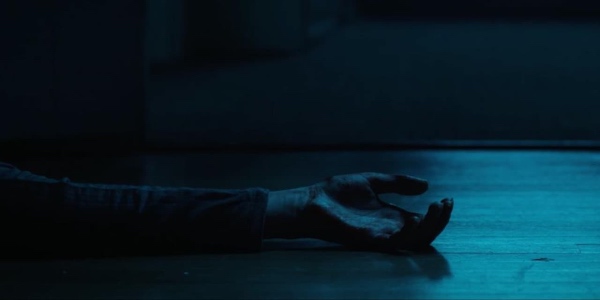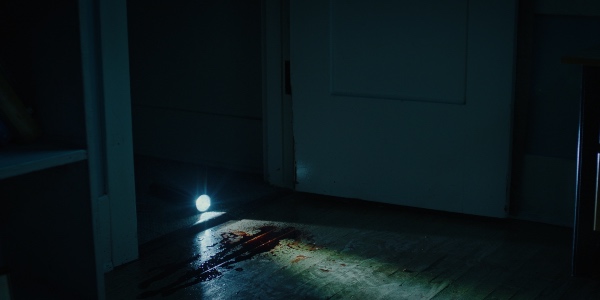RECOVERY: A Study In Post Traumatic Plot Disorder

Caitlin's lifelong love of films began with being shown "Rosemary's…
It’s the opinion of this critic that there are three essential elements to effective storytelling in film: balance, intention, and follow-through. Recovery does not necessarily miss the boat on these essential elements, rather it makes a swiping pass and sometimes does strike out completely. That makes it a very difficult film to develop a cohesive opinion on.
There are some things that it does really well. There are some things that just don’t work at all. Most frustratingly, there are things that it only begins to do well before dropping them.
In Recovery, the patients of a female drug treatment facility battle more than their own demons as a mysterious killer begins picking them off one by one. Who is responsible? Is it Ronnie Price (Stephanie Pearson), the Afghanistan veteran with violent tendencies? Dr. Jessica Barnes (Hope Quattrocki), grappling with her own darkness? Maybe it’s the quiet and disturbed Katherine (Aily Kei)?
Recovery is the feature debut of director John Liang, who also lends a writing credit to the film. The film stars Stephanie Pearson as Ronnie, you may know her from guest roles on Medium, Rizzoli and Isles, and Ray Donovan. Other notables include Hope Quattrocki, Liz Fenning, and Aily Kei.
Purpose, but Without Focus
Recovery director John Liang selects the unique lens of horror as a means of exploring… quite a lineup of topics. Liang cites a fascination with the opioid crisis, a longterm interest in veterans’ issues (especially post-traumatic stress disorder), the darkness of addiction, the previous struggles of his mother, and the very raw, human concept of what people will do to survive when faced with certain death as inspiration for his film.

It’s ambitious. And stuffed to the brim like a cinematic burrito. Too stuffed.
The thing is, any one of these topics (and maybe even one or two) would be an absolutely fabulous candidate for exploration. But, what happens when you try to do them all is that the greater picture begins to lose focus. These concepts either don’t get enough time or are given more time than the plot merits and it puts the whole film off center. Therein lies my greatest critique of Recovery; it is off balance.
An Uneven Ensemble
Perhaps the most vivid illustration of the imbalanced nature of Recovery is its mismatched cast. Now, I will give credit where credit is due by saying that it’s refreshing and encouraging to see such a diverse cast with many types of representation considered. The ensemble is competent, albeit off kilter.
It’s far from the worst thing about Recovery, but the quality of performances by this small ensemble is hit or miss. Some are incredibly high-quality, some hit that awkward spot in between, and others prove to be obvious weak links. The issue persists beyond actors and performances, as I often found myself wondering “Whose movie is this?”.
Ensemble films are tricky and I’m no stranger to narratives that follow the stories of multiple characters, all seamlessly woven together. But that’s not what’s happening in Recovery. There are obvious leads and side characters, but with all the leads that are brought together, focus is so easily pulled that I was halfway through the film and not quite sure whose story we were actually telling. A symptom of that cinematic burrito illustration I mentioned before.

For Every Low, There’s a High
There are some highlights to Recovery that, for all its narrative flaws, do make it an excellent example of the horror genre. The cinematography is beautiful and I was often impressed by the very interesting shots that would come up. There’s skill and intention there and it lands. Well done.
Gore is another delight! Great kills, great gore effects, and all beautifully crafted to go hand-in-hand with that lineup of interesting shots. It’s visceral and jarring, without being excessive, and definitely an aspect of Recovery where that balance I keep harping on is present.
Structurally, it’s a solid film. Recovery does have a bit of a pacing problem which (are you noticing a theme?) is a result of having to take so much time to introduce the different topics, themes, and their representing characters. An offshoot of this complaint is that when a plot device is set up, it is glaringly obvious because an audience knows to pay attention when too much time is spent on something.
In one scene in particular, the recovering addicts utilize a “speaking stone” to indicate whose turn it is to share. Why would a facility give a big ole rock to a bunch of unstable and potentially at risk patients? Probably because it’s going to become a weapon at the climax…
Pick Me Up, Only to Put Me Down
Follow-through, the third essential element of narrative. Recovery has a big problem with “pick me up, put me down” threads.
An interesting concept or character moment would come up, we’d start to follow the trail, and then it would be gone. This was a repeated issue. Something would be revealed about a character’s past that could be really telling and fascinating, and it would pass as quickly as it had arrived. Would you believe me if I said that I wanted more from this stuffed to the gills film? Well, I do.
And that is the importance of balance, intention, and follow-through. Recovery does not lack in character development. Every single member of its ensemble is interesting and dynamic and very clearly fleshed out… but we only just scratch the surface. The greatest disappointment of Recovery is its lost potential.

By trying to cover so much and by resting so much of those thematic elements across more cast members, Recovery spreads itself to thin and offers just a nibble of its greater message when what you want is a big healthy bite. We can’t dive deep with you if everything is written to just scratch the surface.
I wish we had more focus, intention and decisiveness in where we placed emphasis. I wanted so much more, but there was no runtime or spare room to put that needed depth. It’s what makes the twist ending feel like an odd deviation, rather than an exciting development.
PTSD as Recovery‘s Center
Of all the topics that Recovery tries to cover, it is most effective in discussing PTSD. This is a thoughtful conversation, with all the nuance and grit that the concept requires, and it’s executed by the solid work of Stephanie Pearson. This really works and while it may be a tad on the nose, and it may be another example of where I wanted so much more, it’s easily the most competent and compelling theme explored in the film. Had this been the sole focus of Recovery, we would be reading a very different review.
My verdict on Recovery? It’s flawed, but it’s fun. There’s a lot of good stuff happening here and while it may stumble under the weight of its own plot, there really are moments that make it worth checking out.
Recovery is available now in the U.S. and Canada, digitally and on-demand. What’s your favorite cinematic kill? Let us know in the comments!
Recovery was released in US theaters on June 4, 2019. For all international release dates, see here.
https://m.youtube.com/watch?v=QM3n8IN5ZHg
Does content like this matter to you?
Become a Member and support film journalism. Unlock access to all of Film Inquiry`s great articles. Join a community of like-minded readers who are passionate about cinema - get access to our private members Network, give back to independent filmmakers, and more.
Caitlin's lifelong love of films began with being shown "Rosemary's Baby" at way too young an age. She has been an online content creator since 2014, across a wide array of outlets and subjects. Described as "amazingly and beautifully ruthless," Caitlin resides in Austin, TX and her love of writing on film is only matched by her appreciation for good bourbon and the works of John Carpenter.













